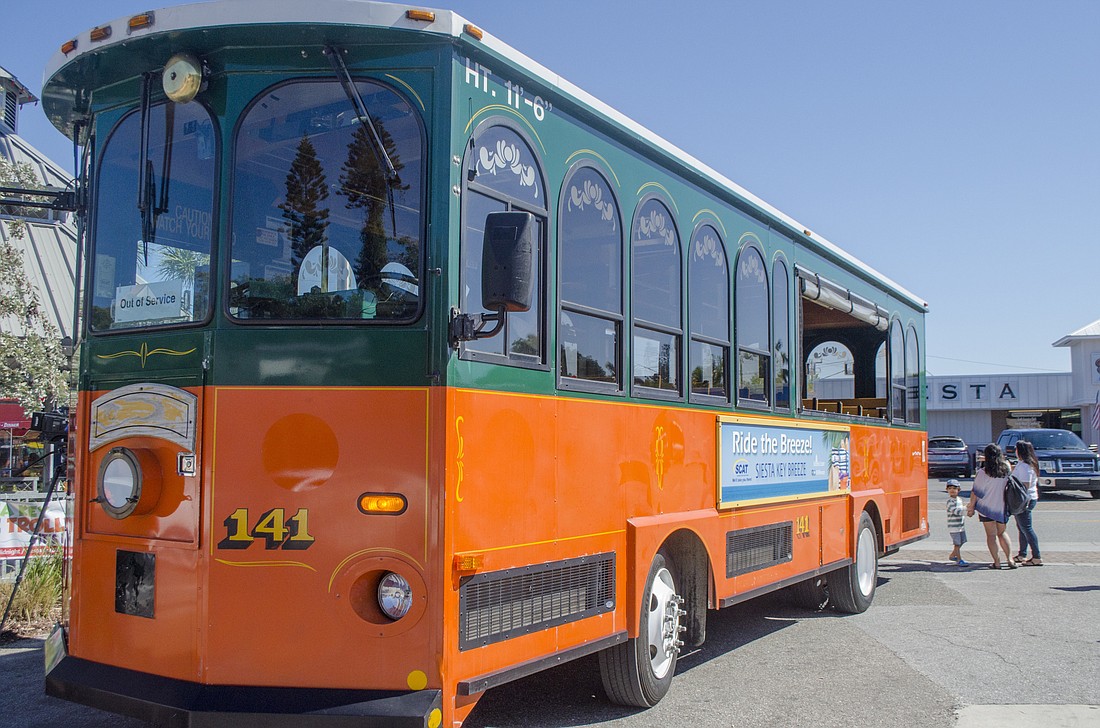- April 23, 2024
-
-
Loading

Loading

Last year in the third week of March, the Sarasota County Area Transit route servicing Siesta Key averaged about 226 riders a day. In the first week after SCAT rolled out its Siesta Key Breeze trolley replacing it last Monday, the number has jumped to more than 1,400.
“Trust me, we were all surprised it exceeded 10,000 rides,” said SCAT spokeswoman Kendra Keiderling about the first week’s ridership numbers. “We were all in shock.”
The county is testing the new service, which spans from Siesta Key Village to Turtle Beach, with the help of a Florida Department of Transportation grant to pay for half of the $592,000 six-month pilot period. SCAT created the previous Route 10 serving Siesta in 2014 to increase ridership, but that route underperformed, as well.
During peak hours, from 10 a.m. to 6 p.m., trolleys run every 20 minutes. The trolleys run every 30 minutes off-peak, from 8 a.m. to 10 a.m. and 6 p.m. to 11:59 p.m.
Kiederling credited SCAT and merchants groups’ promotion of the trolley for the number of rides. Further, the open-air aspect of the transit service makes riding an experience — and it’s free.
“Everybody loves a trolley,” she said.
Although there have been some complaints about the trolley slowing traffic on its route, Kiederling said the numbers indicate the service is taking a lot of cars off the road.
“Do you really want all those people and cars on the road?” she asked. “Then you’d really be going slow.”
Next week, SCAT staff will hold a debriefing meeting to assess the first few weeks of service and recommend any changes.
“I truly believe that it will continue to move on past (the pilot program),” Kiederling said.